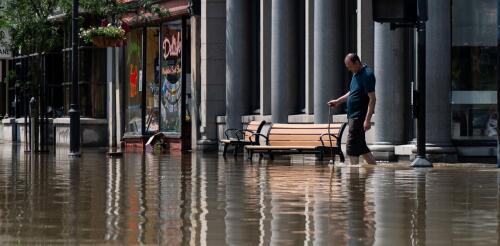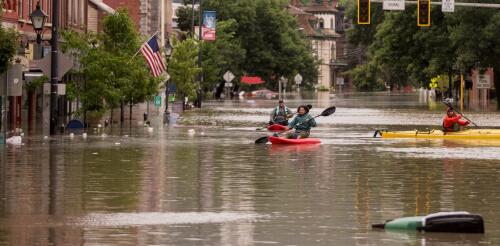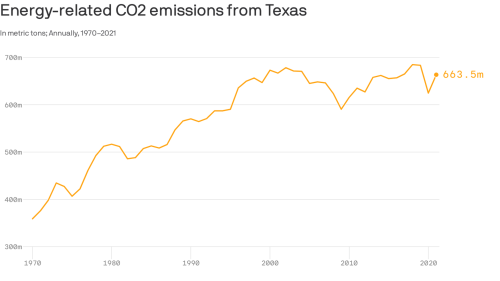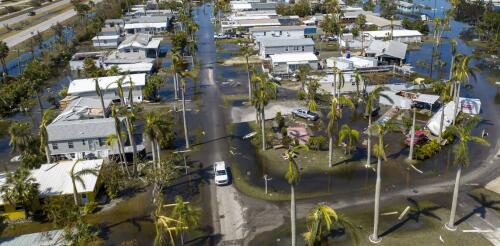Texas
National weather analysts released their 2023 billion-dollar disasters list on Jan. 9, just as 2024 was getting off to a ferocious start. A blizzard was sweeping across across the Plains and Midwest, and the South and East faced flood risks from extreme downpours. The U.S. set an unwelcome record for weather and climate disasters in 2023, with 28 disasters that exceeded more than US$1 billion in damage each. While it wasn’t the most expensive year overall – the costliest years included multiple hurricane strikes – it had the highest number of billion-dollar storms, floods, droughts and fires of any year since counting began in 1980, with six more than any other year, accounting for inflation. 2023’s billion-dollar disasters. Click the image to expand. NOAA The year’s most expensive disaster started with an unprecedented heat wave that sat over Texas for weeks over...
The year 2023 was marked by extraordinary heat, wildfires and weather disasters. In the U.S., an unprecedented heat wave gripped much of Texas and the Southwest with highs well over 100 degrees Fahrenheit (37.8 Celsius) for the entire month of July. Historic rainfall in April flooded Fort Lauderdale, Florida, with 25 inches of rain in 24 hours. A wave of severe storms in July sent water pouring into cities across Vermont and New York. Another powerful system in December swept up the Atlantic coast with hurricane-like storm surge and heavy rainfall. The West Coast started and ended the year with flooding and mudslides from atmospheric rivers, and California was hit in August by a tropical storm – an extremely rare event there. Wildfires ravaged Hawaii, Louisiana and several other states. And Canada’s worst fire season on record sent thick smoke across large parts of North America. A person walks through a scene of destructio...
World leaders headed into overtime this week in Dubai at COP28, the international climate change summit, to broker agreements on lowering global-warming emissions. Driving the news: In the U.S., Texas continues to emit the most greenhouse gasses of any state with little signs of recent change. By the numbers: U.S. Energy Information Administration (EIA) data show Texas’ overall CO2 levels increased nearly 85% from 1970 to 2021 across all sectors — homes, businesses and transportation. Threat level: The state is experiencing the impacts of climate change in many ways, from record-setting temperatures to longer droughts and wetter hurricanes. Between the lines: Texas has yet to see any significant change in emissions in recent years — just a 1% increase between 2016 and 2021, according to the EIA data. Meanwhile: A recent draft document from the Texas Department of...
Warm water in the Atlantic Ocean and Gulf of Mexico can fuel powerful hurricanes, but how destructive a storm becomes isn’t just about the climate and weather – it also depends on the people and property in harm’s way. In many coastal cities, fast population growth has left more people living in areas at high risk of flooding. I am a geographer who studies the human dimensions of climate change and natural disasters. My research and mapping with colleagues shows that socially vulnerable communities – those least able to prepare for disasters or recover afterward – tend to be concentrated in areas that are more susceptible to flooding, particularly on the Gulf Coast. Larger, vulnerable populations Nearly 40% of the U.S. population lives in a coastal county today. Many of these areas are increasingly exposed to disasters, including hurricanes and high tide flooding that has been worsened by sea level rise. The Gulf of Mexico region, in particular,...
Over recent months there has been an orchestrated pushback against investors and insurers who integrate the risks of climate change into their business models. That pushback – emanating from Republican-led states – is having an impact on how companies speak publicly. But whether it will affect their efforts to respond to climate change is less clear. The latest targets have been global insurance companies, and their responses offer some insight. Under pressure, several major insurers, including AXA, Allianz, Lloyd’s and Swiss Re, have pulled out of a United Nations-organized alliance committed to a global goal of net-zero emissions by mid-century. There’s a word for companies going quiet in the face of orchestrated attacks: “greenhushing.” But while the insurers’ departures from the alliance might look like a victory for politicians and political donors who want to delay action on climate change, the companies say leaving doesn’t...




